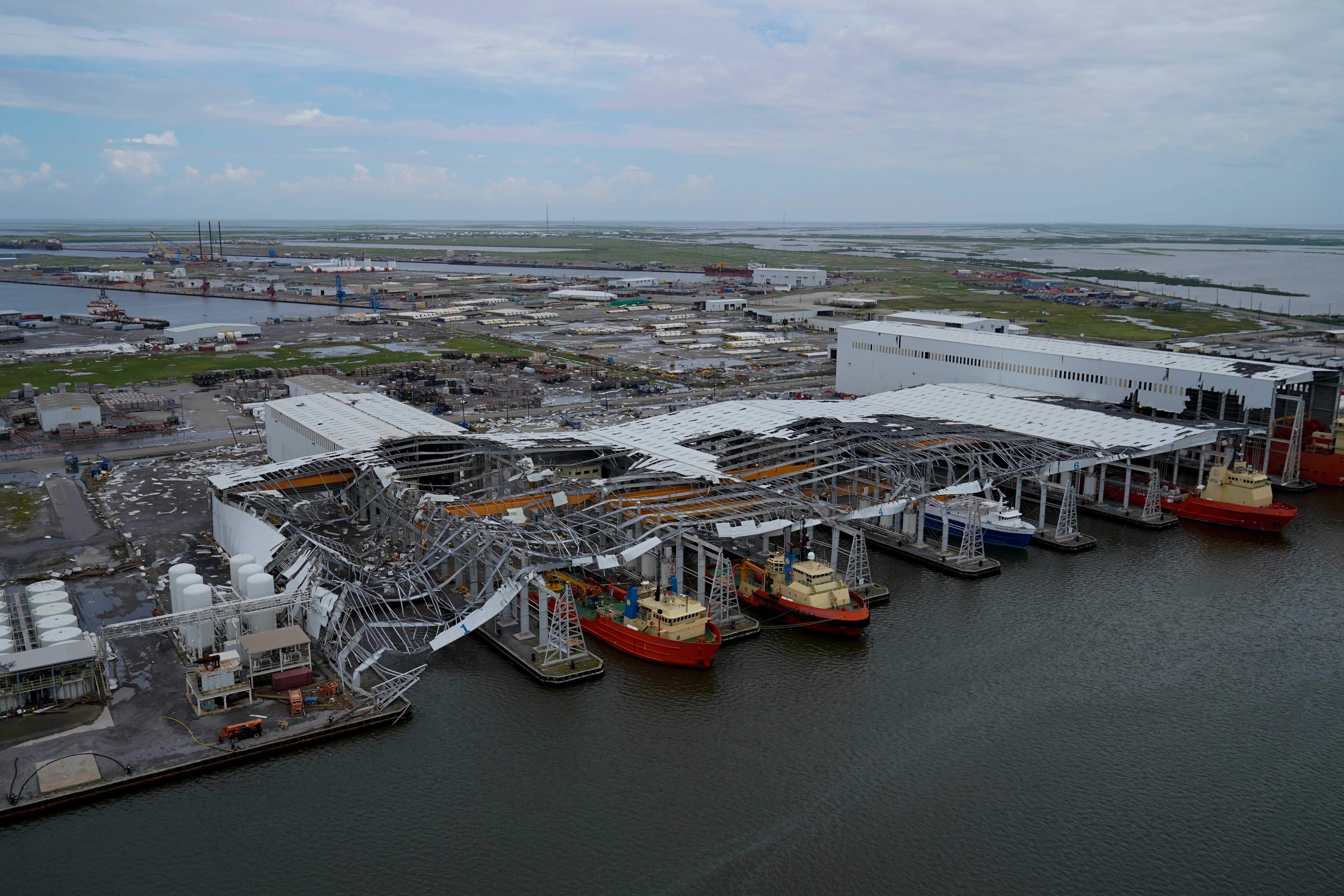Ida-hit oil industry port sustains less damage than feared
A critical port that serves as the primary support hub for the Gulf of Mexico’s deepwater offshore oil and gas industry sustained less damage from Hurricane Ida’s direct hit than initially feared and should be able to return to working operations “in the near future."

Your support helps us to tell the story
From reproductive rights to climate change to Big Tech, The Independent is on the ground when the story is developing. Whether it's investigating the financials of Elon Musk's pro-Trump PAC or producing our latest documentary, 'The A Word', which shines a light on the American women fighting for reproductive rights, we know how important it is to parse out the facts from the messaging.
At such a critical moment in US history, we need reporters on the ground. Your donation allows us to keep sending journalists to speak to both sides of the story.
The Independent is trusted by Americans across the entire political spectrum. And unlike many other quality news outlets, we choose not to lock Americans out of our reporting and analysis with paywalls. We believe quality journalism should be available to everyone, paid for by those who can afford it.
Your support makes all the difference.A critical port that serves as the primary support hub for the Gulf of Mexico’s deepwater offshore oil and gas industry sustained less damage from Hurricane Ida s direct hit than initially feared and should be back to working operations “in the near future," a port leader said Thursday.
Ida knocked out Port Fourchon in Lafourche Parish and hobbled the oil and gas industry. But Chett Chiasson, executive director for the commission that operates Port Fourchon, said assessment teams were surveying the damage and “it did not look as bad as I thought.”
“The structures are still good, not all of them, OK, not nearly all of them. But the majority of them are still good, and we can get things back up and running,” Chiasson said at a livestreamed Lafourche Parish briefing on Ida response. “For the most part, they’re going to be able to get them up and running fairly quickly.”
Chiasson had previously raised serious concerns about the extent of the port's damage and the potential impact to the nation's fuel supplies. He acknowledged Thursday that he “expected the worst” and was surprised when the destruction was far less dire.
Getting the port operational is integral to the nation’s fuel supply.
Sami Yahya, an energy analyst for S&P Global Platts, said more than 90% of the U.S. Gulf oil supply goes through Port Fourchon.
“We have to get things back up and moving for the energy needs of this country. We need them here, but the rest of the country needs it as well,” Chiasson said.
News of better-than-expected damage assessment at Port Fourchon was another sign that the industry was starting its rebound from Ida.
As Ida approached, refineries representing almost 15% of total U.S. capacity shut down. Some are already running at partial loads, and energy researcher IHS Markit forecast Wednesday that nearly half of them will be at full production within about 10 days. However, IHS estimated that nearly one-third of the affected capacity will be down for longer than three weeks.
According to Interior Department figures, crews returned to about 100 oil and gas platforms in the Gulf between Tuesday and Thursday, out of 560 that are ordinarily staffed.
“This is the first light at the end of the tunnel for recovery,” Yahya said. “We were worried about companies being able to get workers back on the facilities.”
Yahya said obstacles remain. Some helicopter companies haven’t resumed carrying oil workers to offshore platforms. Some of the oil workers might be unavailable because they are dealing with flooded or damaged homes. And Fourchon hasn't yet returned to operations.
The restoration of power is the key factor. Refineries use massive amounts of electricity to distill crude oil into products such as gasoline, jet fuel, diesel and heating oil. They also need power to run pumps that deliver the crude and ship the finished goods through pipelines.
Andy Lipow, president of Lipow Oil Associates in Houston said flyover inspections of refineries didn't show any significant damage or flooding. The biggest hurdle, Lipow said, will be getting power back.
“The recovery process may be slow,” he said. “We’re still waiting for power to be restored to most of those refineries that shut down.”
Lipow predicted that supplies of products such as gasoline will tighten in the Southeast and Mid-Atlantic states, and he predicted that East Coast motorists could see an increase of 5 cents to 10 cents a gallon.
“There is enough supply to make it through the Labor Day weekend,” he said. “We’re just going to have to see when these refineries get up and running.”
___
Koenig reported from Dallas.